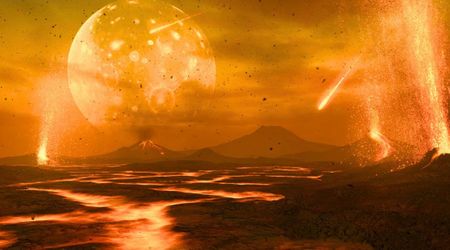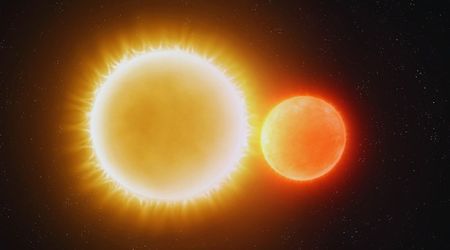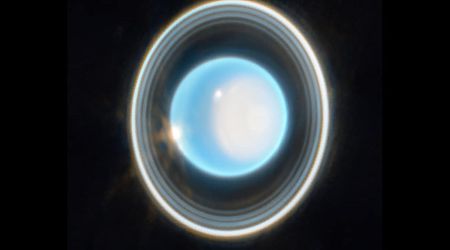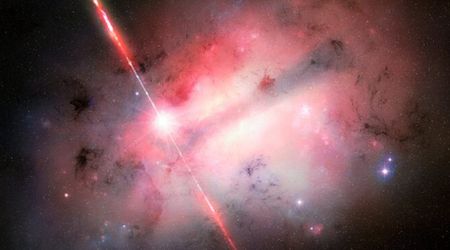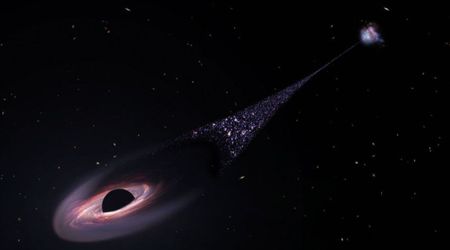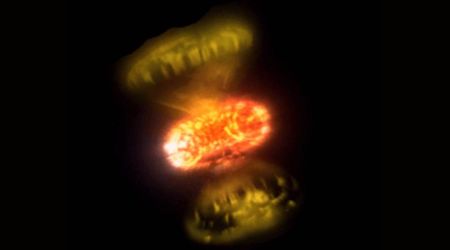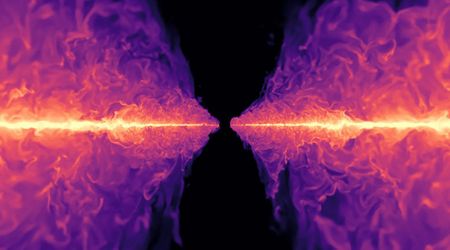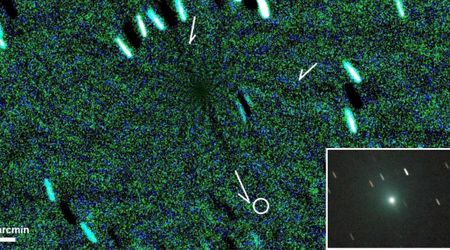The Hyades Star Cluster

Taurus, the Bull, is an ancient constellation that dates back to when bulls were worshipped in the Middle East. His face is marked by the V-shaped cluster of stars called the Hyades, his glinting red eye is the bright star Aldebaran and his long horns are tipped by the stars Zeta and Beta Tauri.
The Hyades (also catalogued as Melotte 25) are one of the major tourist attractions in the sky. In Greek mythology they are sisters, the daughters of Aethra and Atlas (the giant who carried the heavens on his shoulders) and half-sisters to the Pleiades. The Greeks told that the Hyades nursed the infant Dionysus, a son of Zeus, and were rewarded with a place in the sky. The name Hyades means “the rainy ones”, because they were associated with wet and stormy weather.
Legend says that there were five Hyades, but fifteen shine brighter than 5th magnitude and are visible to the naked eye. Binoculars quickly raise that number into the dozens – in fact, hundreds of stars lie inside the cluster’s 5.5° span. More than 130 of them are brighter than 9th magnitude and, therefore, visible in binoculars under reasonably dark skies.
The brightest star in the Hyades is Theta-2 Tauri, at magnitude +3.4. It teams with magnitude +3.8 Theta-1 Tauri to form a wide naked eye double star, just southwest of brilliant Aldebaran (Alpha Tauri). Aldebaran, an orange giant star about 150 times as luminous as our Sun, looks as though it is a member of the star cluster, but it is not. It is actually a foreground object that merely happens to lie about halfway between the Hyades and ourselves.
Because the Hyades are so scattered, telescopes cannot take the cluster all in at once; even some binoculars cannot squeeze its full extent into their fields of view. The best view of the Hyades will be through binoculars that have fields of view between 8° and 10° in diameter. Anything less and the clustering effect will be lost.
To astronomers, the Hyades are one of the most important star groups in the sky, because all of the cluster’s stars share a common motion. They drift slowly through space toward a point a few degrees east of Betelgeuse in Orion, a fact first demonstrated by the American astronomer Lewis Boss in 1908.
From the movements of its stars, the distance to the Hyades Cluster has been accurately determined – it lies 151 light-years from us. This distance can be used to derive absolute magnitudes for cluster members of different kinds, and these values are in turn used as calibrators for determinations of distances to other stellar aggregates. In this way, the distance to the Hyades is the first stepping-stone in our scale of the Universe.
Featured image credit: NASA, ESA, and STScI.
